2.2 Statistical data grouped by patent types

The above figure shows the average duration (days) of patent invalidation cases grouped by patent types . On the whole , average duration of invalidation cases of invention patent is longer than that of design patent and utility model, wherein making the decision of partially invalidation is the most time-consuming in each patent type. The possible reason is that, compared with the cases of completely maintained and those of completely invalidation, the cases of partially maintained may be much more complicated so that it takes more time t o make the decisions.
The above duration on the whole is incredibly longer than that expected according to ordinary experiences. As to this point, the author of the report searched the most time consuming cases, preliminarily determining that the cases with long duration (e.g., more than one year) all are involved in one or more administrative litigations, which is the reason for the long-time consumption. Top ten of the most time-consuming cases are hereby listed below for reference.
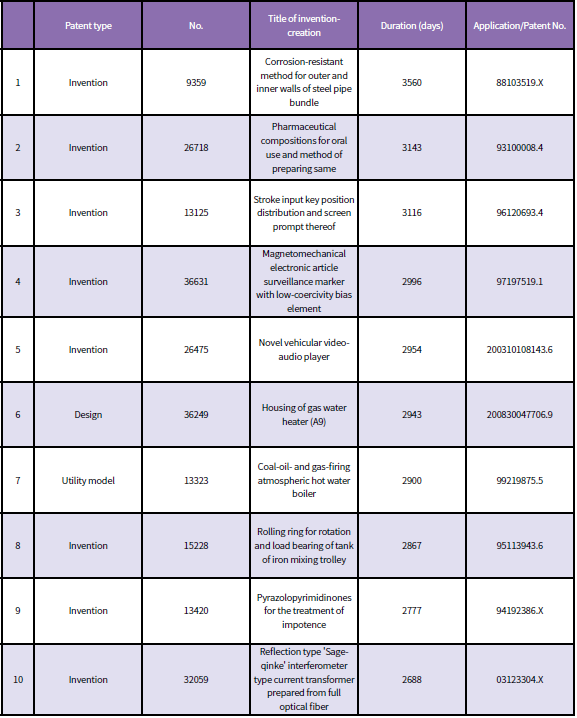
The duration would be considerably shortened if only the data of the years 2017-2018 are taken into account.
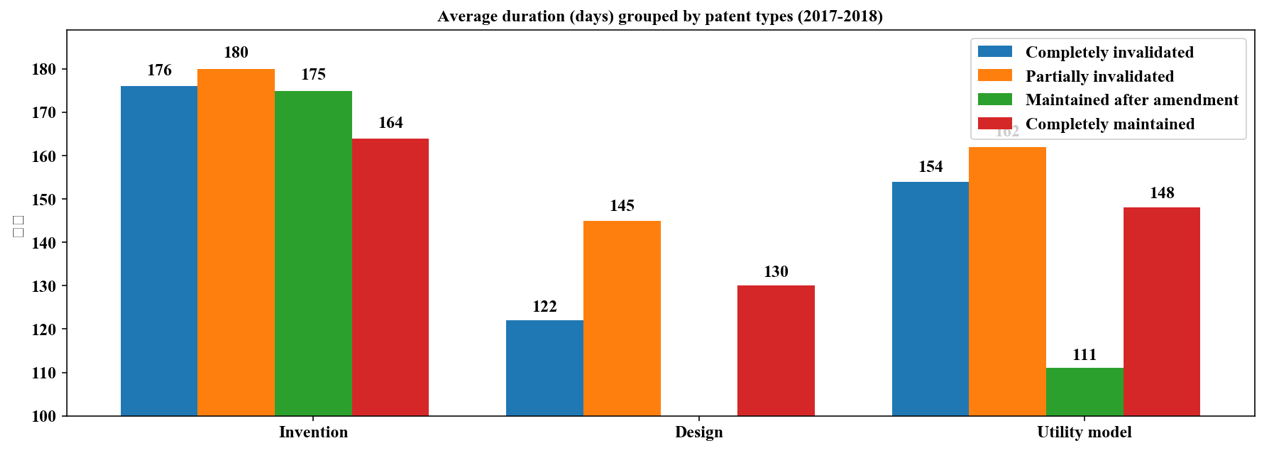
According to the data of the years 2017-2018, it can be substantially deemed that, regarding the cases except for those involved in administrative litigation or the like, it generally takes about six months for invalidation procedure of invention, about five months for that of utility model, and about four to five months for that of design.
III. Miscellaneous
Besides the above statistical information, some data of interest are also sorted and listed herein for the readers’ reference.
3.1 Patents subject to the most times of invalidation (Top eleven) (The same one No. of decision may correspond to a plurality of requests of invalidation)
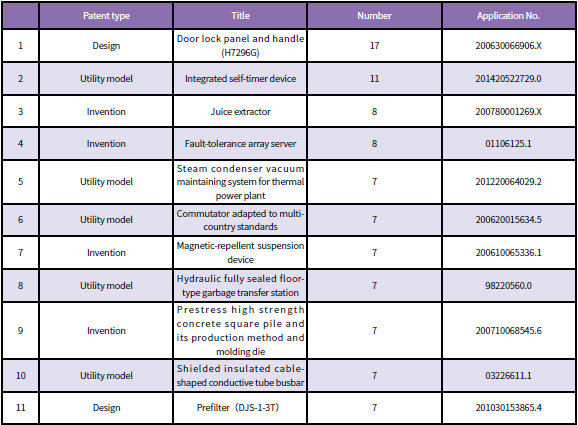
Generally speaking, the times of filing request of invalidation against a patent is in positive proportion with the patent stability (an unstable patent would not be subject to invalidation for many times since it could be invalidated easily) and the patent value (a low value patent is not worthy of the costs consumed by petitioners). In the patents listed in the above table, the ratio of utility model and that of design are not smaller than the ratio of invention. Accordingly, the patents for utility model and design drafted at a high level can also have value not lower than the patents for invention.
3.2 Number of invalidation cases grouped by classification code and ratio of completely maintained cases
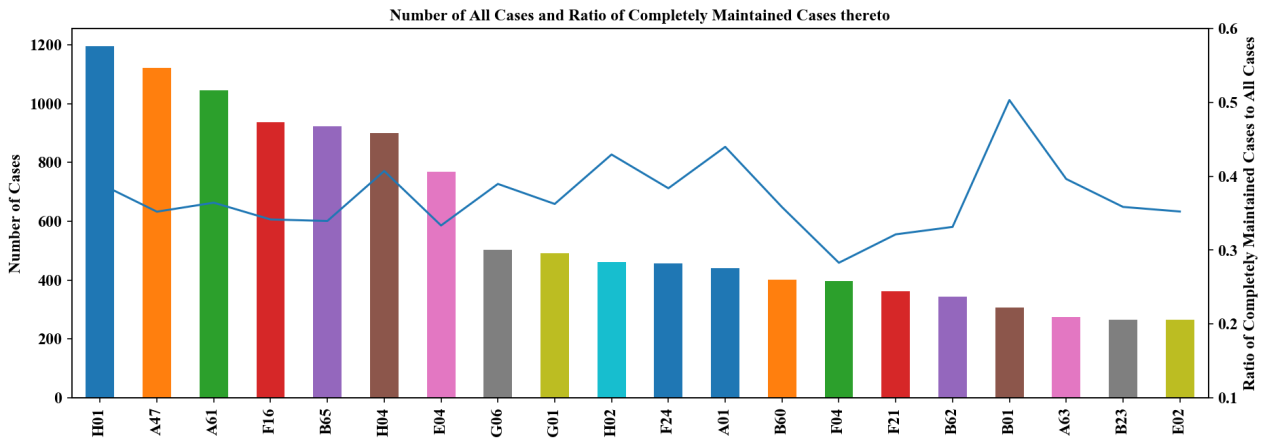
The above figure shows number of cases grouped by classification code (taking only the first three number of each case) and ratio of completely maintained cases thereto. As can be seen from the figure, as to the number of the cases, the top three classes are H01 (basic electrical element), A47 (furniture; household items or equipment; coffee mills; spice mills; general vacuum cleaners) and A61 (medical or veterinary science; hygiene), each of which involves over 1,000 cases.
Besides, as can be seen from the above figure, the ratio of completely maintained cases varies with different classes. The classes3 where the ratio of completely maintained cases is more than 50% and those lower than 30% are listed below for reader’s reference.
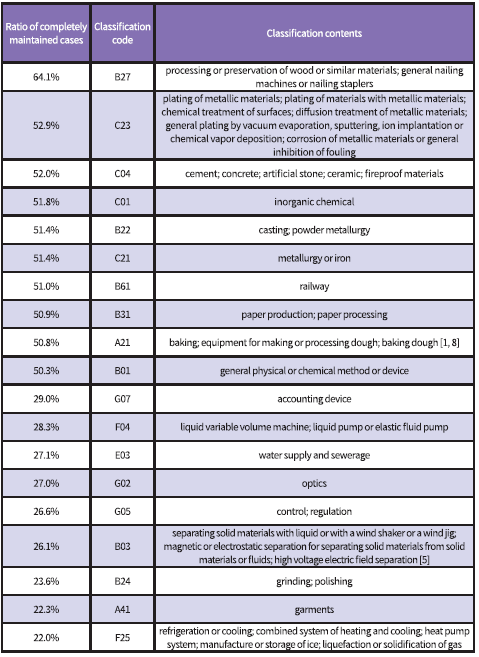
On the whole, the invalidation cases in such basic fields as inorganic materials (e.g., wood, metal, and cement) and processing thereof (e.g. plating, and surface treatment) have a relatively high ratio of completely maintained cases. The invalidation cases in such specific application field such as optoelectronics have a relatively low ratio of completely maintained cases.
1 Refer to http://app.sipo-reexam.gov.cn/reexam_out1110/wuxiao/wuxiaolb.jsp
2 It should be noted that the data published on the official website of the PRB per se have some problems (e.g., some decisions, especially those issued at early stage, are subject to information missing or error).
Consequently, some data with error or those not usable are deleted in the statistical process. The statistical data are concentrated upon the decisions published from the year of 2008 to 2018. Due to the deletion
of some decisions and the possible deficiency of the programmed algorithm, the statistical result below would be of error to a certain extent. Besides, since a decision of invalidation cannot be issued unless the
invalidation case is closed, the cases not closed are not counted into the following statistical analysis.
3 Considering the cases with a small number is statistically meaningless, the classification here only involves the cases with a number of more than 50.








